BACK TO finalistS
Finalist
KITA-KITA: SHAPING RESILIENT FUTURES TOGETHER
KITA-KITA“Shaping Resilient Futures Together” Now and then, I find myself contemplating how I can effectively embark on my interior design journey, not just about pursuing it as a professional endeavor, but also as an odyssey of personal experiences and stories that goes together with every design intention, choice, and decision. As a student designer, it […]

KITA-KITA
“Shaping Resilient Futures Together”
Now and then, I find myself contemplating how I can effectively embark on my interior design journey, not just about pursuing it as a professional endeavor, but also as an odyssey of personal experiences and stories that goes together with every design intention, choice, and decision. As a student designer, it is crucial to bring not only technical knowledge and skills, but also life encounters that have shaped my understanding of the profound impact that interior spaces have on our daily lives. Embracing inspiration from our ability to confront life’s challenges, stumble, and courageously rise again, I present KITA-KITA: a project that breathes hope, security, and protection.
"KITA-KITA: Shaping Resilient Futures Together" stands as a guiding light, rekindling hope not just as a conventional evacuation center, but as a community center transforming disaster into resilience. Translating to "let us see each other," it embodies the hope of seeing everyone safe and secure after disasters. Across Asia and beyond, including the Philippines, diverse natural calamities such as typhoons, severe floods, and earthquakes pose significant challenges. In the aftermath of these events, KITA-KITA embraces the critical role of providing refuge in a community shelter where individuals from all walks of life converge, sharing empathy, compassion, commonalities, and differences. It is a space where the unity of diverse cultures and perspectives fosters a supportive environment, emphasizing the strength found in togetherness. KITA-KITA not only offers physical space but also emotional solace, helping individuals rebuild their lives & communities with renewed hope & resilience. By encouraging communal support & understanding, KITA-KITA transforms the experience of disaster recovery into a journey of collective healing & growth, ensuring that every person feels valued and heard in the process. It aims to create a community capable of facing future challenges with solidarity & hope.
The essence of humanity-centered design is captured in the core principle of “Design with and by, not for” the community, emphasizing the need to involve the community in the design process by Don Norman, in his book Design for a Better World, 2023. According to Don Norman, we must recognize that everyone is a designer who continually adapts activities and belongings to meet changing needs. As history has shown, changing people's beliefs and actions is challenging and time-consuming, especially in the way they live (Norman, 2023). KITA-KITA takes this a step further by acknowledging the difficulty of change and transforming how humanity perceives it in light of our call to action. KITA-KITA demonstrates that personal efforts can create a domino effect, emphasizing that individual actions lead to broader positive results. It reveals that significant change is possible if we all contribute and adapt collectively, making it a total community effort. Through this design approach, KITA-KITA champions sustainability and future-proof designs.
KITA-KITA transforms visions into reality by promoting a unified and humanity-centered approach. It advocates for sustainability in materials, living, and the environment while adhering to the United Nations— Sustainable Development Goals (SDGs). With a commitment to function
without electricity, relying on manual operations, solar energy innovations, and a community workforce or “Bayanihan,” KITA-KITA embodies longevity and resilience. Its water and waste management systems, elevation above ground level, and farm pond demonstrate its commitment to promoting sustainability. Its interior spaces are all dedicated to dynamic solutions for developing collaboration, sharing vulnerability, and strengthening meaningful connections among its users.
KITA-KITA advocates for community unity and embodies Filipino values globally, addressing local and global challenges. It celebrates human disaster resilience in facing life's adversities, reminding us of our shared humanity. KITA-KITA symbolizes solidarity and hope, akin to the unwavering presence of the sun each day. It reflects the Filipino spirit of "bayanihan," showcasing the power of collective action. The phrase "KITA-KITA TA DIDTO" translates to “let us see each other there.” It encapsulates a positive message of reassurance and unity, promising to meet again in safety and togetherness. It signifies a shared commitment to support one another, reflecting the essence of community disaster resilience reminding us that together, we are stronger and can overcome any challenge.
As I journeyed to an answer, I found out that it is through purposeful and innovative designs that we truly grasp the transformative power that design holds in shaping our world. KITA-KITA inspires us to believe deeply in the potential for change when individuals, communities, and nations come together in unity. KITA-KITA encourages us to embrace a sense of collective responsibility, recognizing that our future is intertwined and that together, we can create a future that is more compassionate, sustainable, and disaster resilient for all.
REFERENCE
Norman, D. A. (2023). Design for a better world: Meaningful, Sustainable, Humanity Centered. MIT Press.
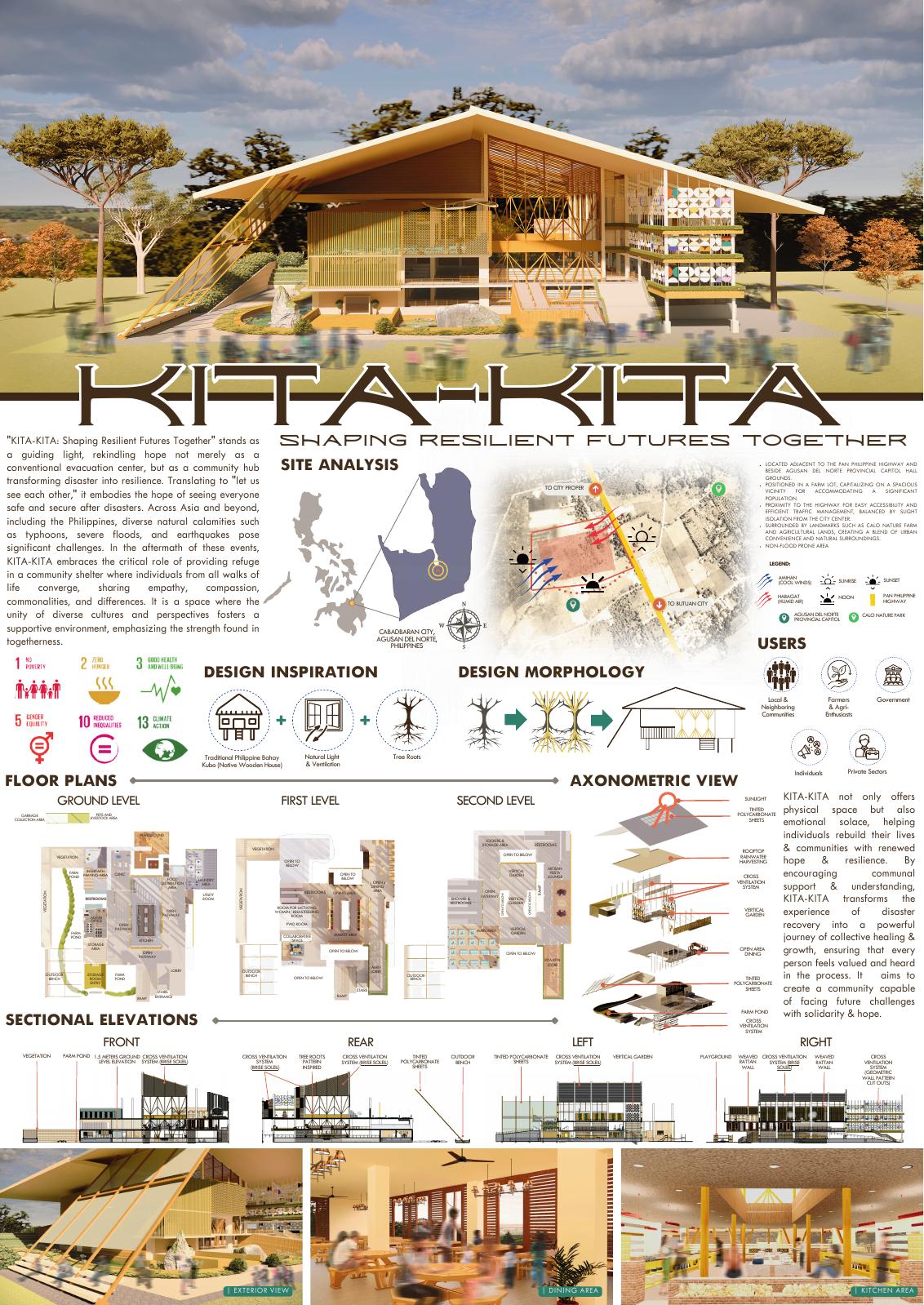
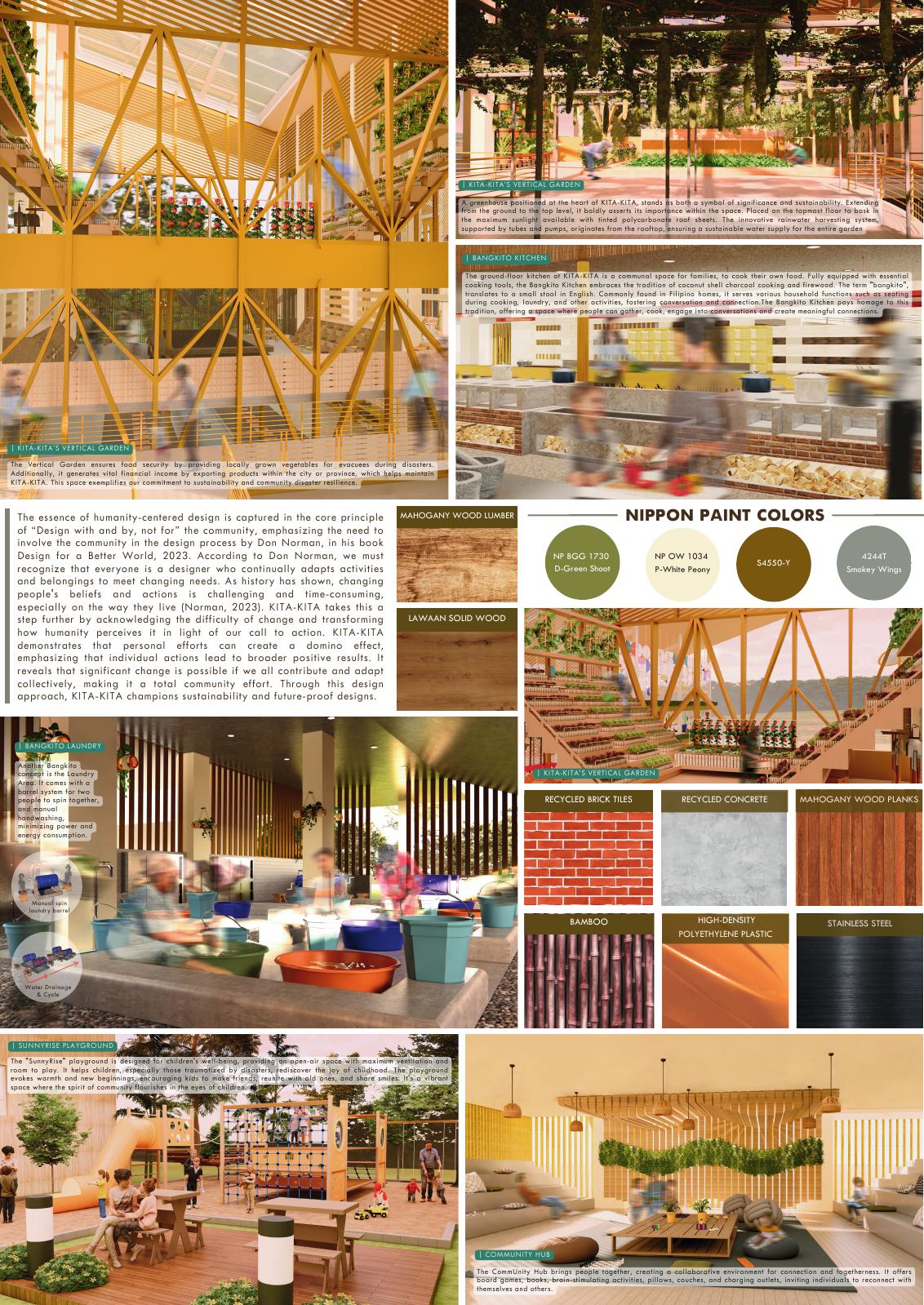
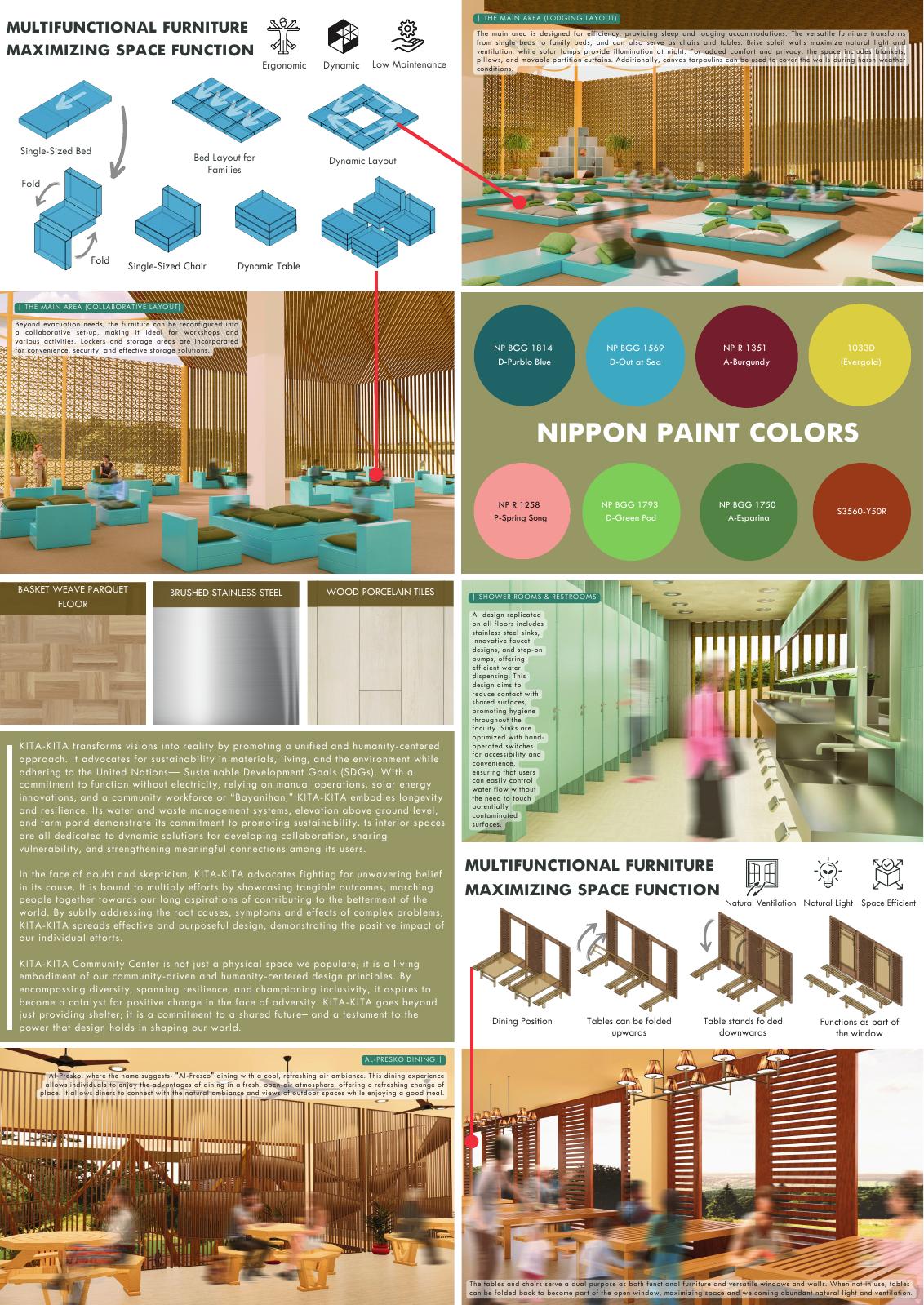
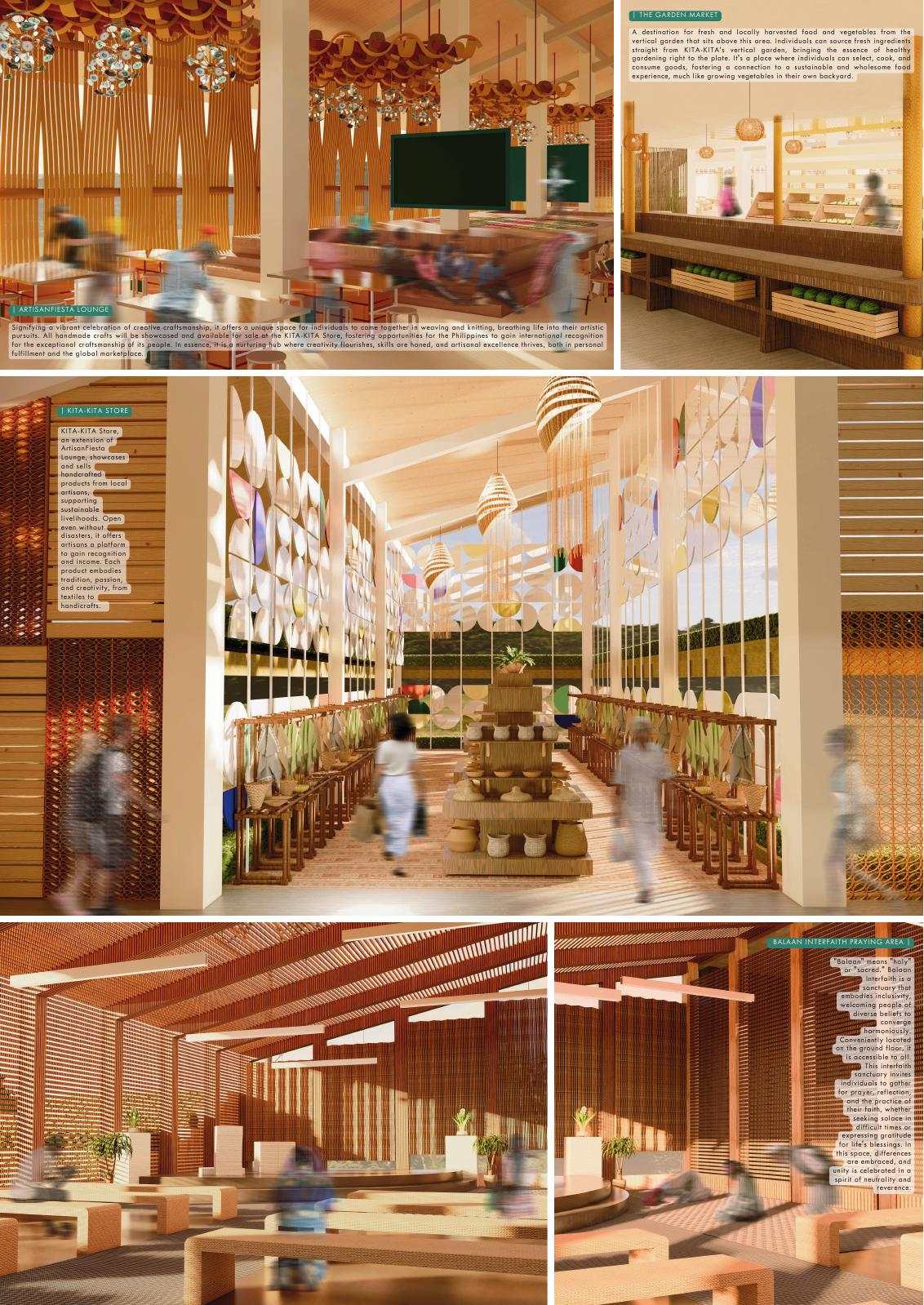


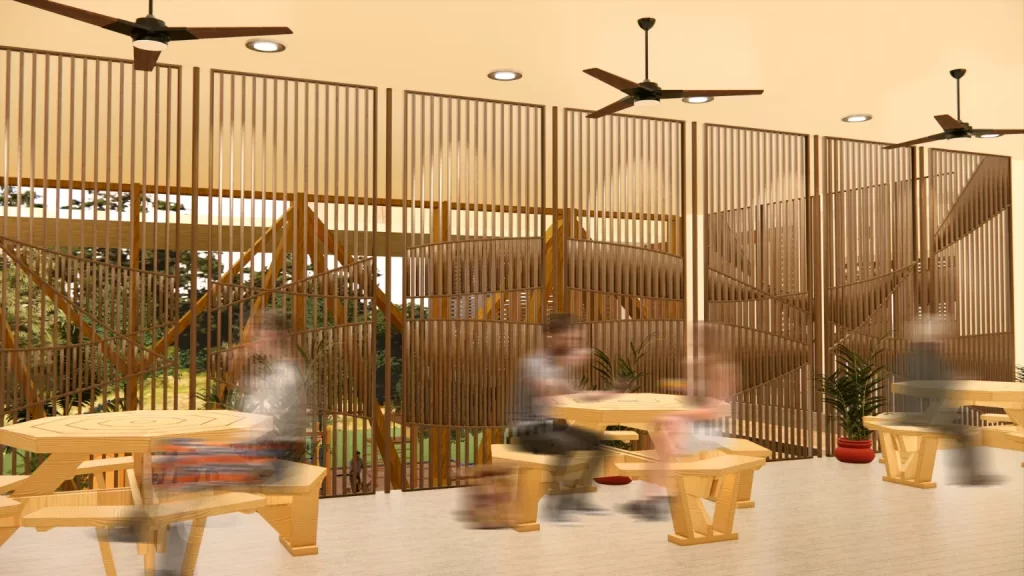
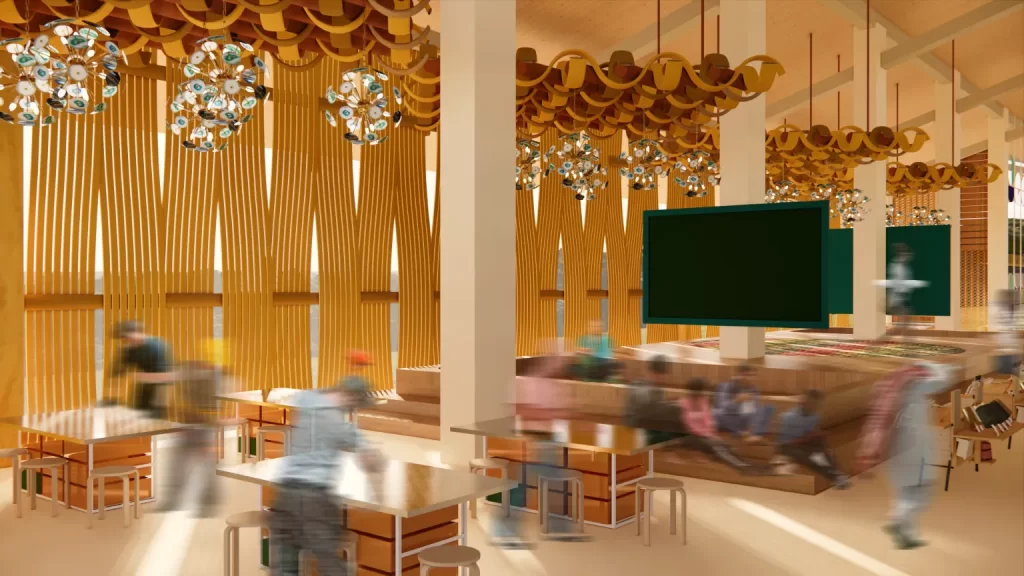
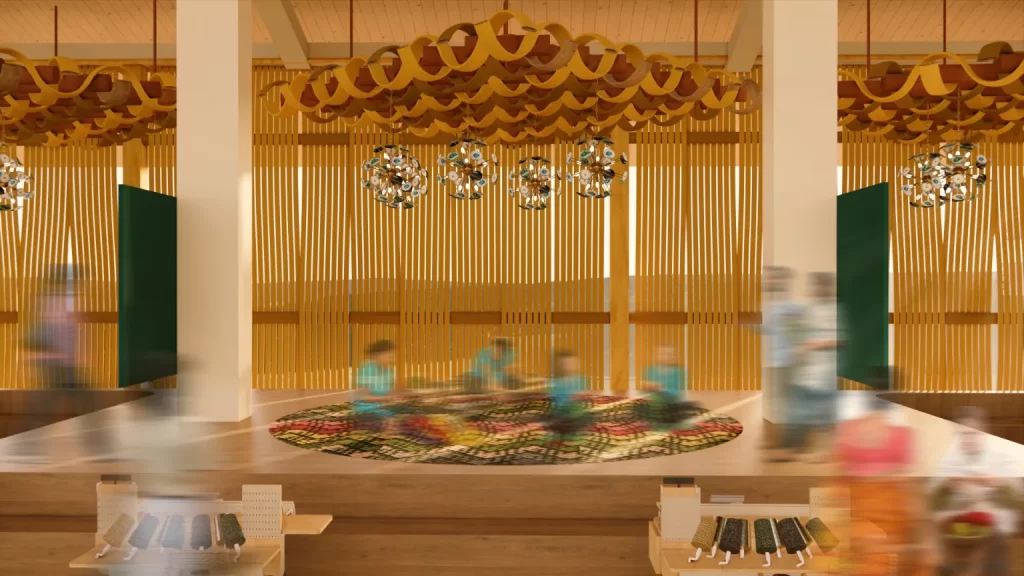
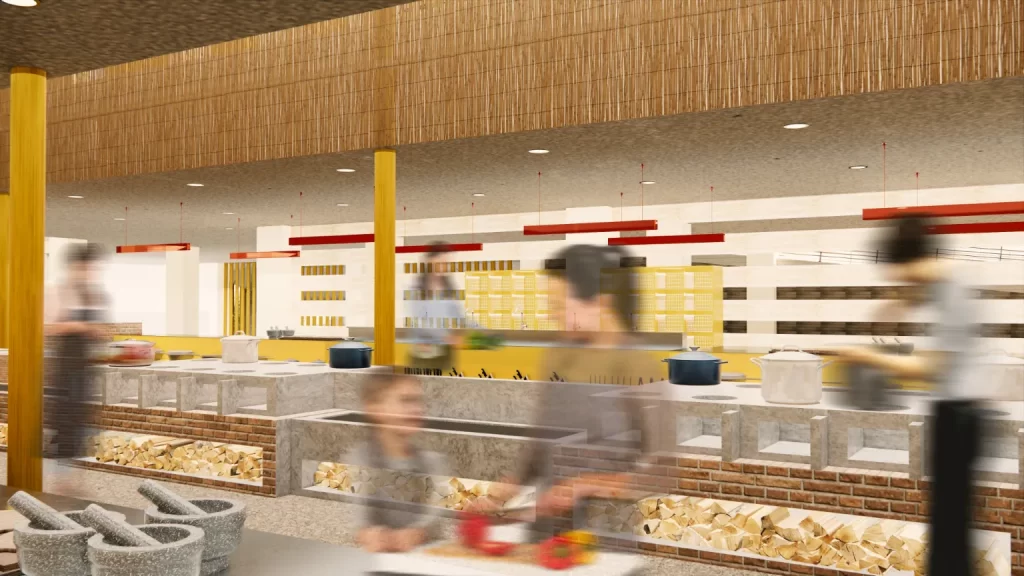
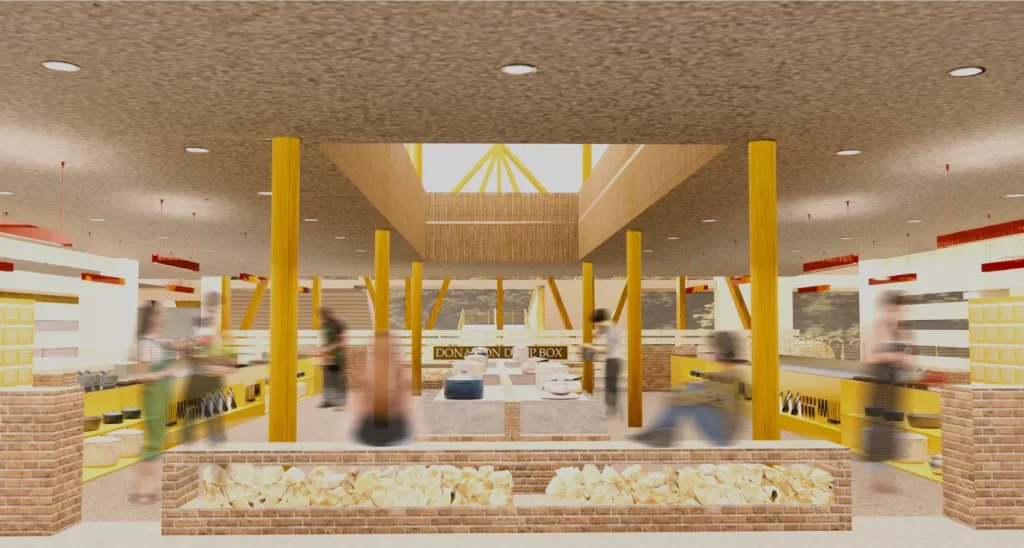
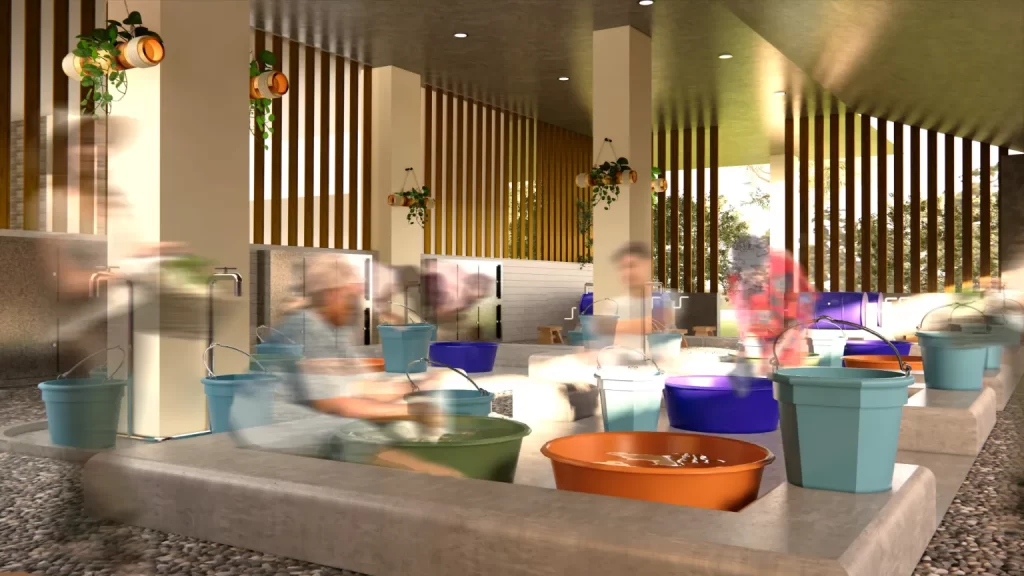
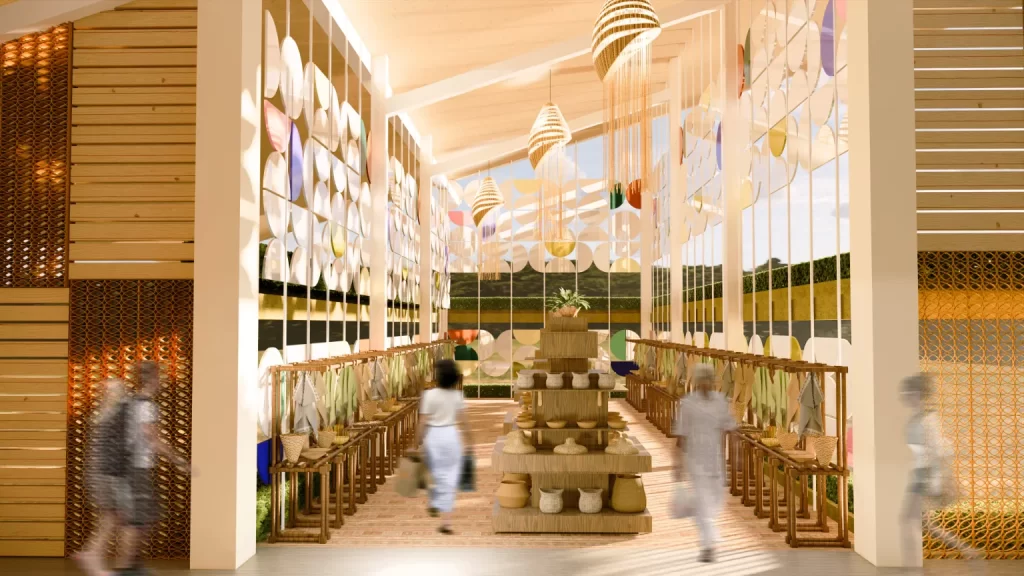

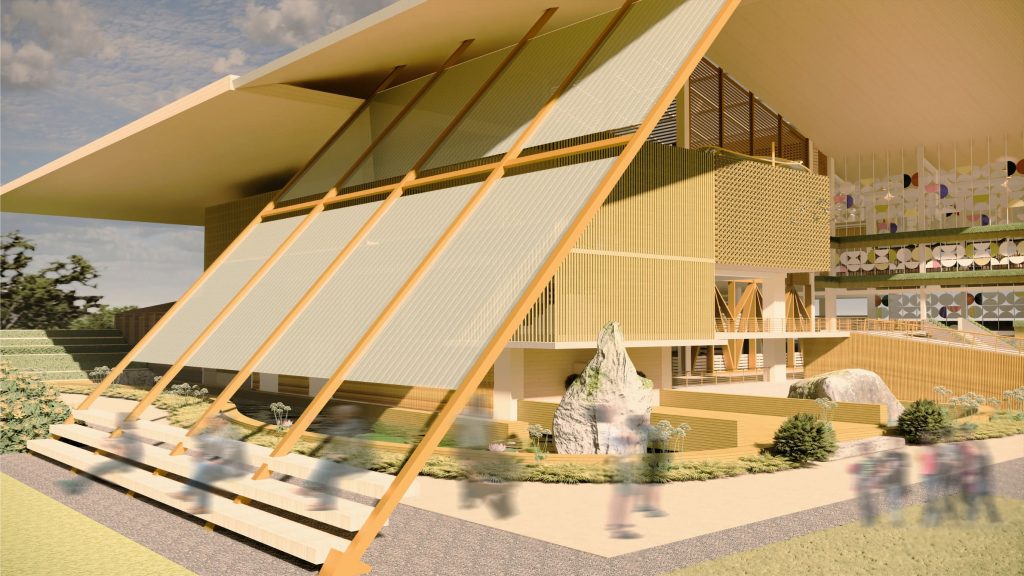
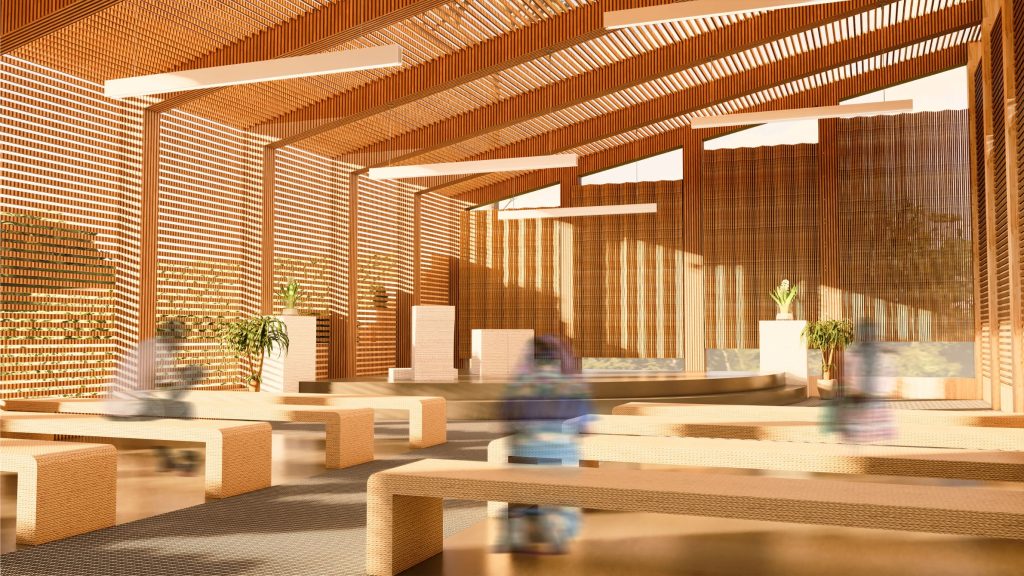

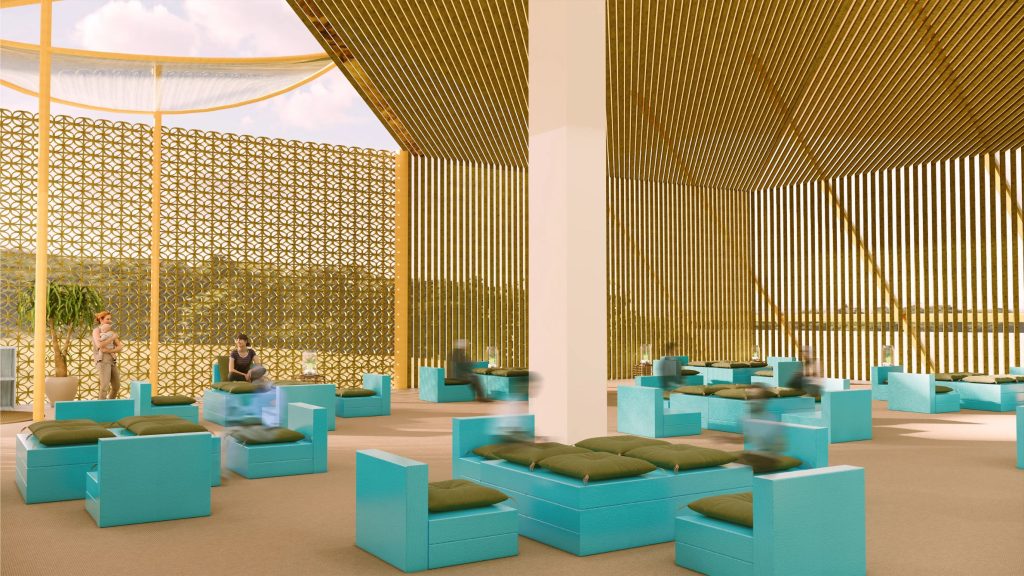
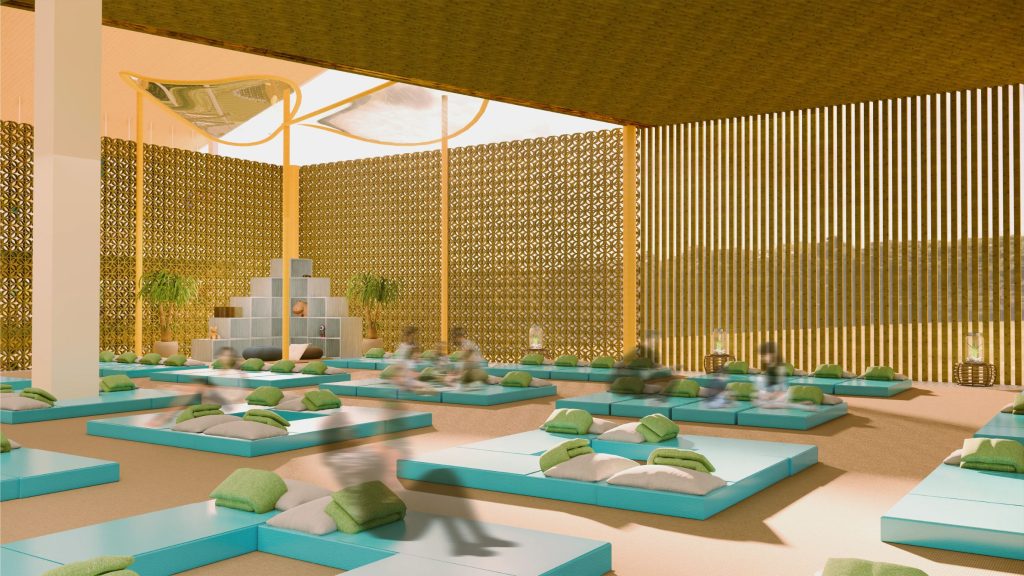
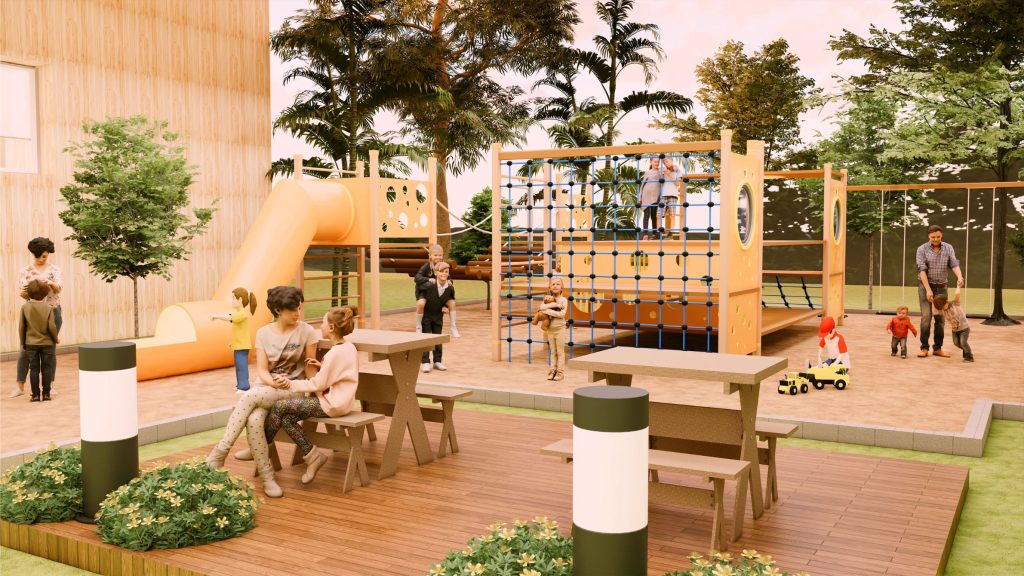
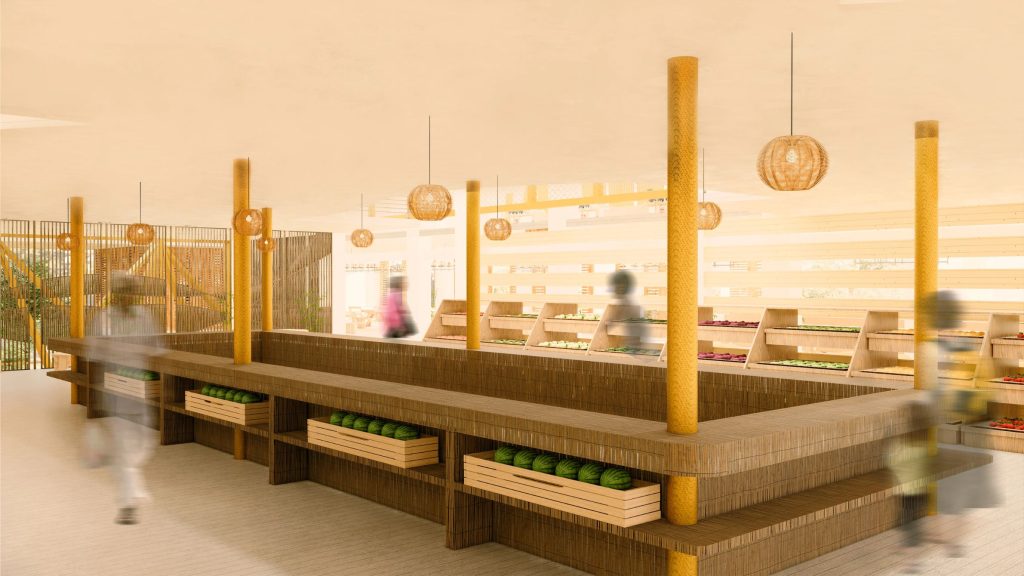
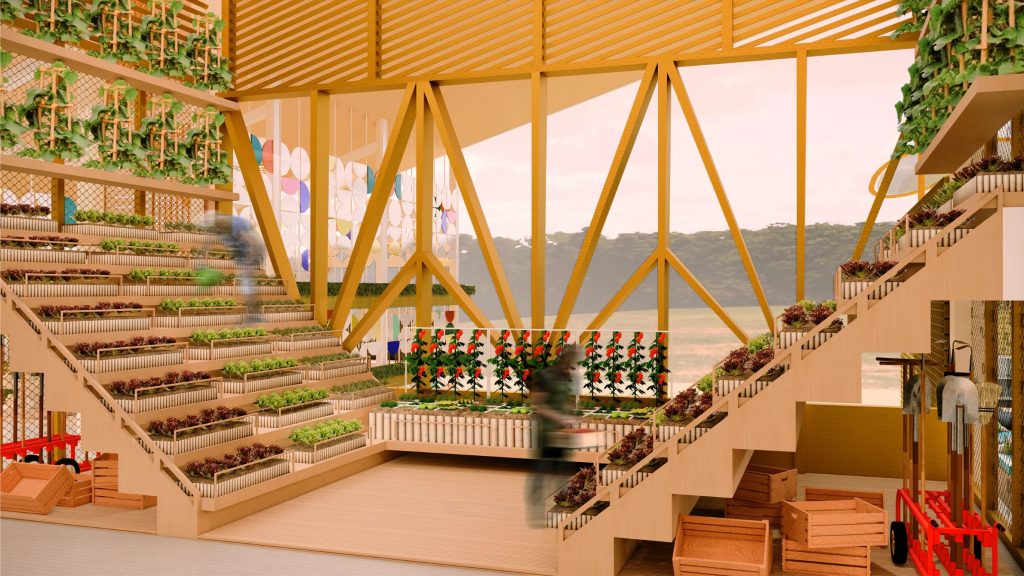
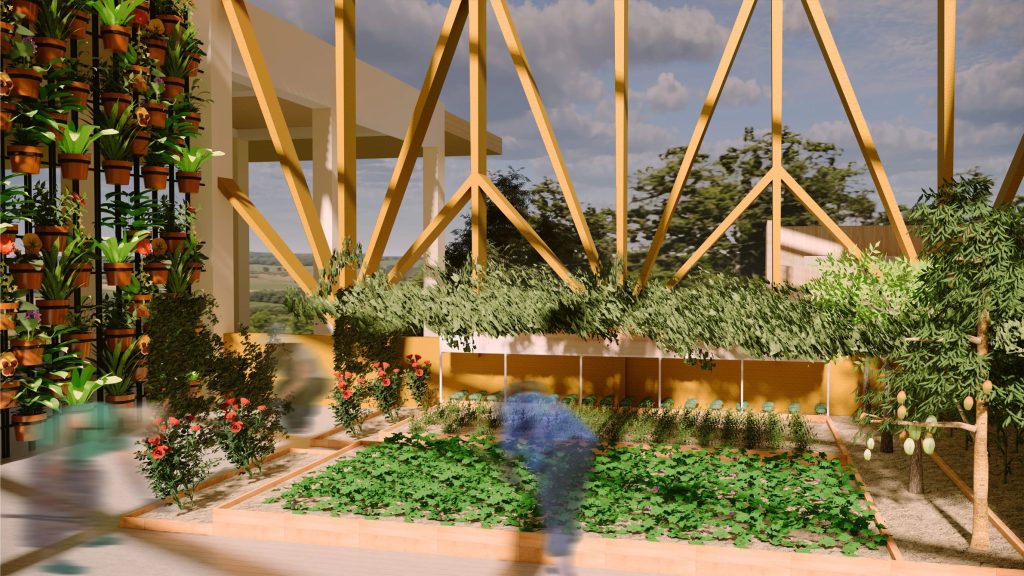

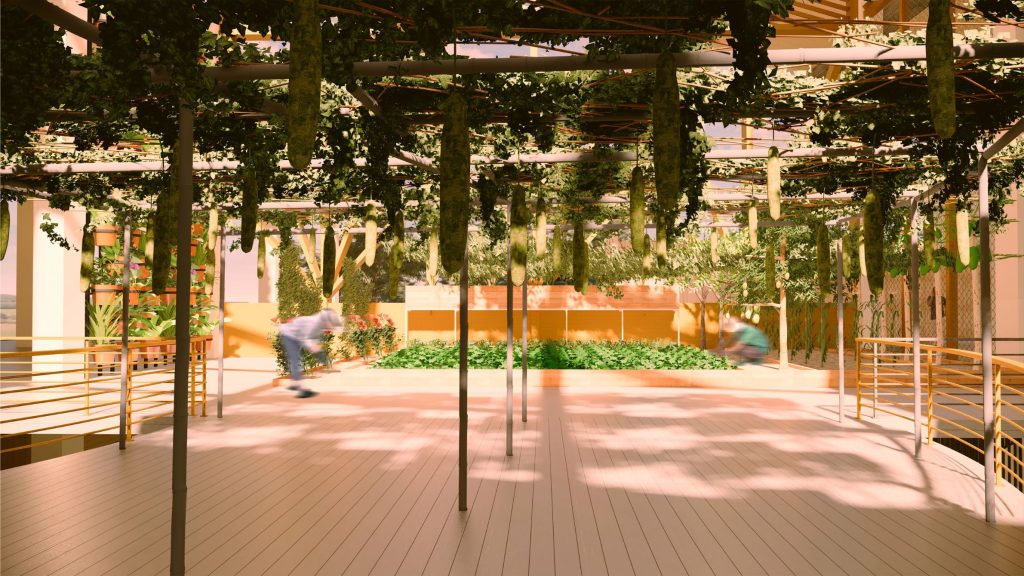
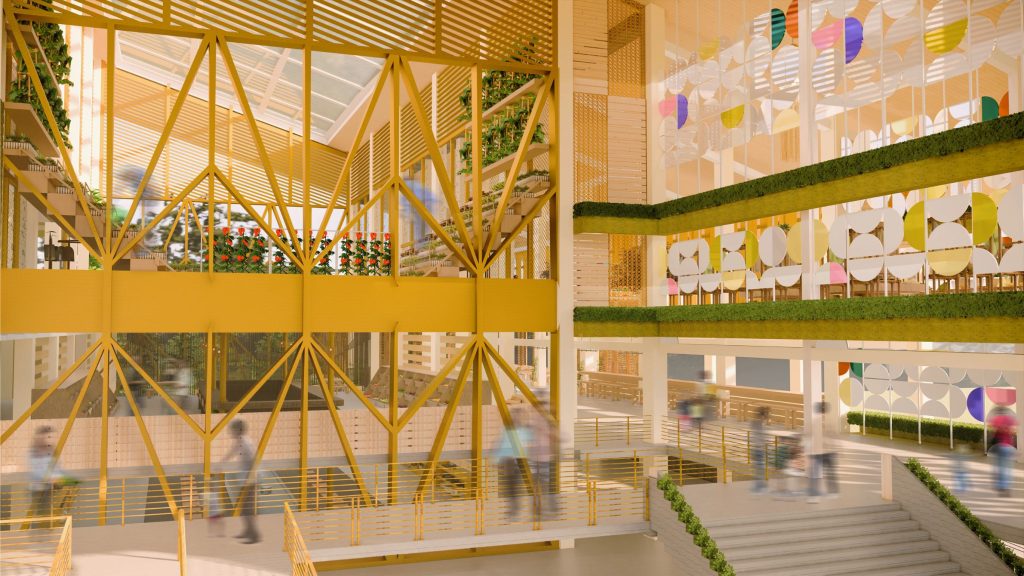
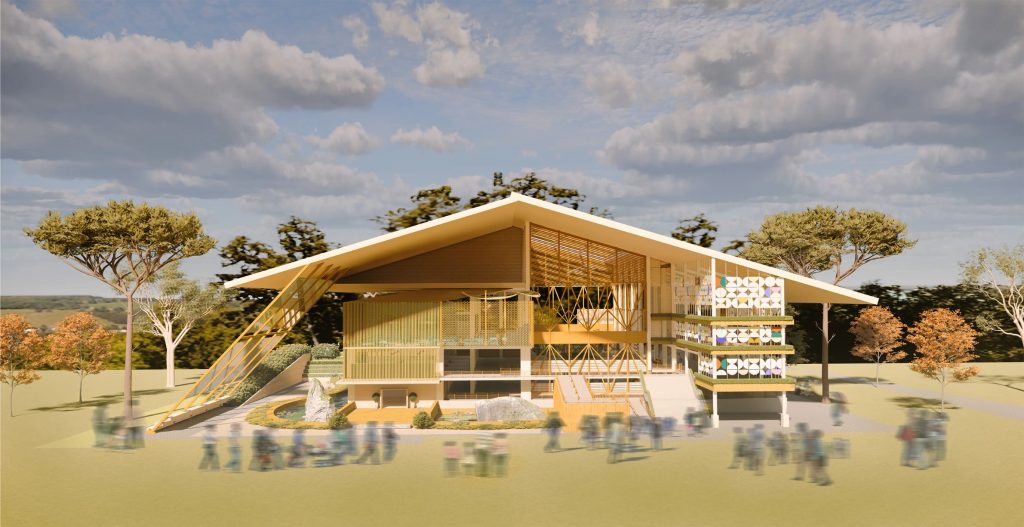
Showcase your design to an international audience
SUBMIT NOW
Image: Agrapolis Urban Permaculture Farm by David Johanes Palar
Top
KITA-KITA Now and then, I find myself contemplating how I can effectively embark on my interior design journey, not just about pursuing it as a professional endeavor, but also as an odyssey of personal experiences and stories that goes together with every design intention, choice, and decision. As a student designer, it is crucial to bring not only technical knowledge and skills, but also life encounters that have shaped my understanding of the profound impact that interior spaces have on our daily lives. Embracing inspiration from our ability to confront life’s challenges, stumble, and courageously rise again, I present KITA-KITA: a project that breathes hope, security, and protection. "KITA-KITA: Shaping Resilient Futures Together" stands as a guiding light, rekindling hope not just as a conventional evacuation center, but as a community center transforming disaster into resilience. Translating to "let us see each other," it embodies the hope of seeing everyone safe and secure after disasters. Across Asia and beyond, including the Philippines, diverse natural calamities such as typhoons, severe floods, and earthquakes pose significant challenges. In the aftermath of these events, KITA-KITA embraces the critical role of providing refuge in a community shelter where individuals from all walks of life converge, sharing empathy, compassion, commonalities, and differences. It is a space where the unity of diverse cultures and perspectives fosters a supportive environment, emphasizing the strength found in togetherness. KITA-KITA not only offers physical space but also emotional solace, helping individuals rebuild their lives & communities with renewed hope & resilience. By encouraging communal support & understanding, KITA-KITA transforms the experience of disaster recovery into a journey of collective healing & growth, ensuring that every person feels valued and heard in the process. It aims to create a community capable of facing future challenges with solidarity & hope. The essence of humanity-centered design is captured in the core principle of “Design with and by, not for” the community, emphasizing the need to involve the community in the design process by Don Norman, in his book Design for a Better World, 2023. According to Don Norman, we must recognize that everyone is a designer who continually adapts activities and belongings to meet changing needs. As history has shown, changing people's beliefs and actions is challenging and time-consuming, especially in the way they live (Norman, 2023). KITA-KITA takes this a step further by acknowledging the difficulty of change and transforming how humanity perceives it in light of our call to action. KITA-KITA demonstrates that personal efforts can create a domino effect, emphasizing that individual actions lead to broader positive results. It reveals that significant change is possible if we all contribute and adapt collectively, making it a total community effort. Through this design approach, KITA-KITA champions sustainability and future-proof designs. KITA-KITA transforms visions into reality by promoting a unified and humanity-centered approach. It advocates for sustainability in materials, living, and the environment while adhering to the United Nations— Sustainable Development Goals (SDGs). With a commitment to function without electricity, relying on manual operations, solar energy innovations, and a community workforce or “Bayanihan,” KITA-KITA embodies longevity and resilience. Its water and waste management systems, elevation above ground level, and farm pond demonstrate its commitment to promoting sustainability. Its interior spaces are all dedicated to dynamic solutions for developing collaboration, sharing vulnerability, and strengthening meaningful connections among its users. KITA-KITA advocates for community unity and embodies Filipino values globally, addressing local and global challenges. It celebrates human disaster resilience in facing life's adversities, reminding us of our shared humanity. KITA-KITA symbolizes solidarity and hope, akin to the unwavering presence of the sun each day. It reflects the Filipino spirit of "bayanihan," showcasing the power of collective action. The phrase "KITA-KITA TA DIDTO" translates to “let us see each other there.” It encapsulates a positive message of reassurance and unity, promising to meet again in safety and togetherness. It signifies a shared commitment to support one another, reflecting the essence of community disaster resilience reminding us that together, we are stronger and can overcome any challenge. As I journeyed to an answer, I found out that it is through purposeful and innovative designs that we truly grasp the transformative power that design holds in shaping our world. KITA-KITA inspires us to believe deeply in the potential for change when individuals, communities, and nations come together in unity. KITA-KITA encourages us to embrace a sense of collective responsibility, recognizing that our future is intertwined and that together, we can create a future that is more compassionate, sustainable, and disaster resilient for all. REFERENCE
“Shaping Resilient Futures Together”
Norman, D. A. (2023). Design for a better world: Meaningful, Sustainable, Humanity Centered. MIT Press.


























